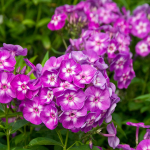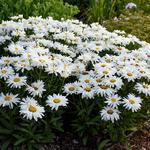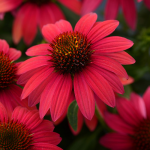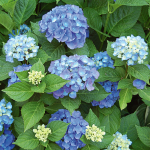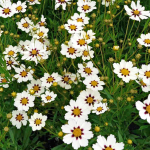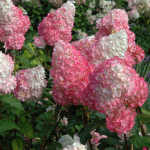Product Details
These unique blossoms of Coreopsis verticillata Creme Caramel™—terracotta and becoming deeper reddish orange in cooler temperatures—are a distinctive color for the garden. The small blooms are displayed to great advantage against a backdrop of sprightly green, threadleaf foliage. 'Novcorcar' PP 22,565
The genus Coreopsis is composed of Daisy-like plants that are excellent for the border. Most are native to the southeastern United States and Mexico. They are not the least fussy about soil but require full sun. Remove spent flowers to ensure continuing bloom.
For more information on Coreopsis care, click Growing Guide.
Shipping
HOW PLANTS ARE SHIPPED
The size of the plants we ship has been selected to reduce the shock of transplanting. For some, this means a large, bareroot crown. Others cannot travel bareroot or transplant best if grown in containers. We ship these perennials and annuals in 1 pint pots, except as noted. We must point out that many perennials will not bloom the first year after planting, but will the following year, amply rewarding your patience. We ship bulbs as dormant, bare bulbs, sometimes with some wood shavings or moss. Shrubs, Roses, vines, and other woody plants may be shipped bareroot or in pots. The size of the pot is noted in the quick facts for each item.
WHEN WE SHIP
We ship our bulbs and plants at the right time for planting in your area, except as noted, with orders dispatched on a first-come, first-served basis by climate zone. We also ship a wide range of containers and planters, tools, supplies, fertilizers, garden wear, garden decor items, as well as indoor decorations like wreaths and dried bouquets when available. Estimated dates for shipping are indicated in the green Shipping Details box for each item. Please supply a street address for delivery. Kindly contact us with two weeks notice, if you'll be away at the expected time of delivery.
OUR GUARANTEE
We guarantee to ship plants that are in prime condition for growing. If your order is damaged or fails to meet your expectations, we will cheerfully replace or refund it. Please contact our Customer Service Department at 1-800-503-9624 or email us at [email protected]. Please include your order number or customer number when contacting us.
Reviews
Average Customer Rating:
 (2 Reviews)
Write a Review
(2 Reviews)
Write a Review
Sort by:
lovely and steady bloomer 
A viewer from NJ
22 of 22 people found this review helpful. Do you? yes no Certified buyer
Growing guide
Latin Name Pronunciation: ko-ree-op'sis
Merry daisies in shades of yellow and pink have made Coreopsis mainstays of the summer border. Newer colors include white with burgundy and salmon. Masses of flowers are produced for long periods, especially if plants are consistently deadheaded. These drought-tolerant perennials offer up cheerful blooms excellent for cutting and are of easy culture. There are varieties suitable for the front, middle, and back of the border, and as native Americans, they are right at home in wildflower gardens and meadows.
Light/Watering: Full sun brings out the best in Coreopsis, especially in well-drained soils. Water during drought, but Coreopsis is quite drought-tolerant once established.
Fertilizer/Soil and pH: Coreopsis is not fussy about soil, and will bloom exuberantly under a variety of conditions. Well-drained soils are best, especially in winter. Coreopsis rosea prefers an evenly moist soil (in which it may run a bit wild), although it is not a requirement. Fertilize lightly once in spring with a balanced granular formula; too much fertilizer will result in spindly growth.
Pests/Diseases: Healthy, vigorous plants under good culture are rarely bothered by insects; wash off light infestations of aphids with a forceful water spray. Diseases are also rare, especially in well-drained soils. If soils are too wet, the crowns may rot.
Companions: Butterfly delphinium (Delphinium grandiflorum) or other short Delphiniums are natural complements to yellow Coreopsis. Alliums, Daylilies, and Coneflowers are also lovely in combination with these bright daisies.
Reflowering: Daily deadheading, while onerous, will reward the gardener with almost continuous bloom. To achieve an attractive plant and possible rebloom in autumn, shear plants back by a few inches as flowering slows down in late July.
Dividing/Transplanting: Divide plants every three years in spring or early fall to maintain vigor. Please note that Coreopsis 'Moonbeam' will arrive as a tangle of roots and stems that defies attempts to distinguish top from bottom. Simply dig a wide, shallow hole and set the spidery thing inside horizontally, covering with an inch of soil. Gravity will prevail, and the plant will send roots down and shoots up.
End-of-Season Care: Do not prune back all the way for the winter, as stems left standing will protect the crowns. 'Moonbeam' will benefit from a mulch of salt hay or evergreen boughs.
Calendar of Care
Early Spring: Apply a light application of granular 10-10-10 fertilizer or side-dress with compost and organic amendments when new growth appears. Water newly planted Coreopsis regularly if spring rains are sporadic. Divide or transplant now if desired.
Summer: Deadhead daily for prolonged bloom. Shear plants back by ¼ to ½ to encourage more attractive form and possible reblooming in autumn.
Fall: Plants may be divided or transplanted now if needed. Do not prune all the way back—leave stems at 6–8″ to protect crowns through winter. Mulch 'Moonbeam' with salt hay or evergreen boughs.



